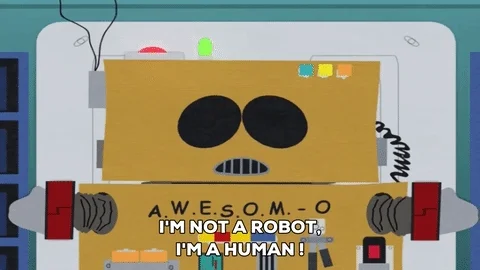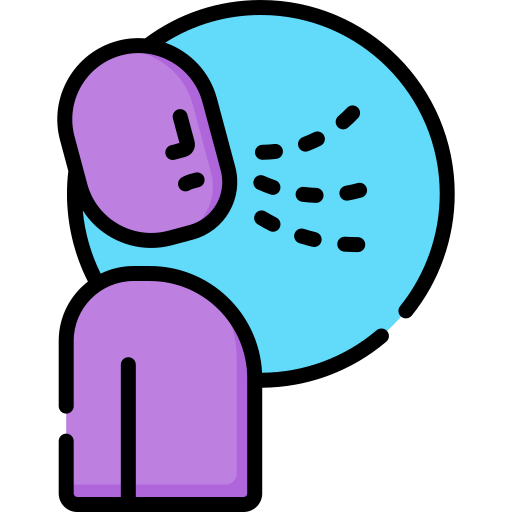
This logo isn't an ad or affiliate link. It's an organization that shares in our mission, and empowered the authors to share their insights in Byte form.
Rumie vets Bytes for compliance with our
Standards.
The organization is responsible for the completeness and reliability of the content.
Learn more
about how Rumie works with partners.
Picture this: you're at a grocery store, and the cashier looks flustered from dealing with a busy line of customers. Some people in line are getting impatient and rude, forgetting that the cashier is human too, and just trying to do their job.

What if I told you that you have the power to help make this interaction smoother and more pleasant for both of you?

Having been a retail worker before, I know exactly what it’s like to face tough situations in customer service. Learning from those experiences, I now have a better idea of how to handle myself when I’m a customer.
So what should you do? These 4 tips will help you be polite and show kindness.
Tip 1: Show empathy

Empathy is the ability to understand another person’s perspective and how they may feel.
Showing empathy to a customer service worker can look like:
Active listening: Give the customer service worker your full attention and make eye contact. Show gestures like nodding or cues, such as: “I understand” or “Can you tell me more?”
Acknowledging their efforts: Express your appreciation for their hard work, even if the outcome wasn’t what you expected. Saying, “Thank you for your time and assistance” shows their work was appreciated.
Validate their feelings and offer encouragement: Recognize the customer service worker’s emotions, especially if they look frustrated or stressed. Say things like: “I appreciate your efforts to help me even with the challenges.” Or “You’re doing a great job! Thank you for your efforts!”
I remember whenever I heard words of encouragement as a worker, I really appreciated the customer for empathizing, especially during a hard day!

Did you know?
Customer service workers are likely to remember your kind gestures for a long time. I still remember the kindness people shared with me when I was a worker, and there were many times when it changed and brightened my whole day!
Tip 2: Be patient

Patience is the ability to remain calm in a difficult situation without getting upset.
Sometimes you may be in situations where things are delayed or slower than expected. It’s important to stay composed and remember that customer service workers are doing the best they can to assist you!
Instead of getting frustrated, find ways to stay patient:
Make a to-do list on your phone
Chat with someone else in the line
Do small exercises, like standing on one foot and then the other
Engage in people-watching and your surroundings
Take deep breaths and count to 10 in your head
![A green doll that looks like a little girl breathing in and out. The text reads, '[deep breaths]'.](https://firebasestorage.googleapis.com/v0/b/learning-dev-89518.appspot.com/o/images%2F03ea9f40-131a-11ef-bb95-3573ba5976d8.webp?alt=media&token=4ab5e3c3-3794-4bf5-9351-8db858e5a81a)
Tip 3: Be polite and respectful

Showing kindness goes a long way! Being polite and respectful is important for any human exchange, especially in customer service.
Use friendly greetings like "Good afternoon" or "Good evening", and ask about their well-being. Avoid aggressive language and use respectful language to foster a positive and smooth exchange for both you and the customer service worker!

Did you know?
Yelling or being rude to workers will NOT help resolve the problem faster. It slows down the process and makes it harder to find solutions.
Tip 4: Remember boundaries
Being nice alone is not enough — it’s also about understanding boundaries in customer service.
Understand and recognize that every customer service worker has a different role, and every role comes with different responsibilities.
 Photo by Blake Wisz on Unsplash
Photo by Blake Wisz on UnsplashSometimes there may be limitations on what they can help you with, and recognizing that boundary shows that you understand.
Examples:
When a cashier can't process a return without a receipt
When a server can't give you a discount without a manager's approval
This understanding not only shows empathy, but also helps create effective problem-solving and smoother interactions for everyone involved.

Quiz
You’re returning an item to the store. The customer service worker helping you seems new, and the process is slower than usual. How should you approach this? Select all that apply:
The customer service worker is trying their best to do their job and they may still be learning their new role. Interrupting or expressing frustration may increase tension and make the situation worse. Telling them to take their time and remain composed shows empathy and respect for the worker's effort and fosters a positive exchange!
Take Action

I learned how to be more polite to customer service workers from my own experiences. Now, as a customer, I treat them with the same compassion and respect I'd want if I was in their shoes.

Next time you’re interacting with a customer service worker:
This Byte has been authored by
Rearchenie Phos
Teacher
BEd, BA